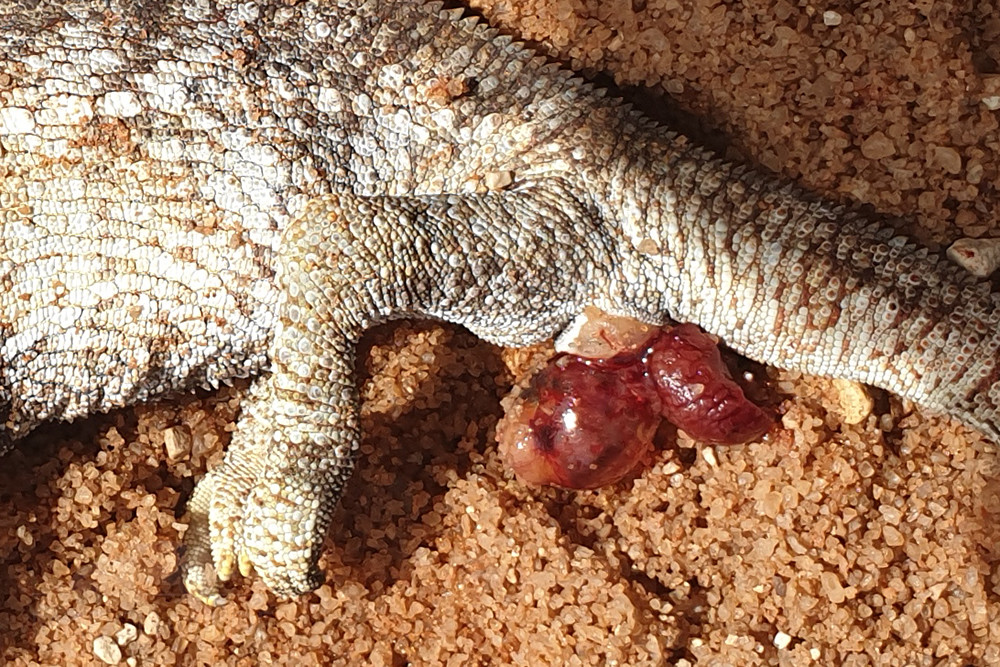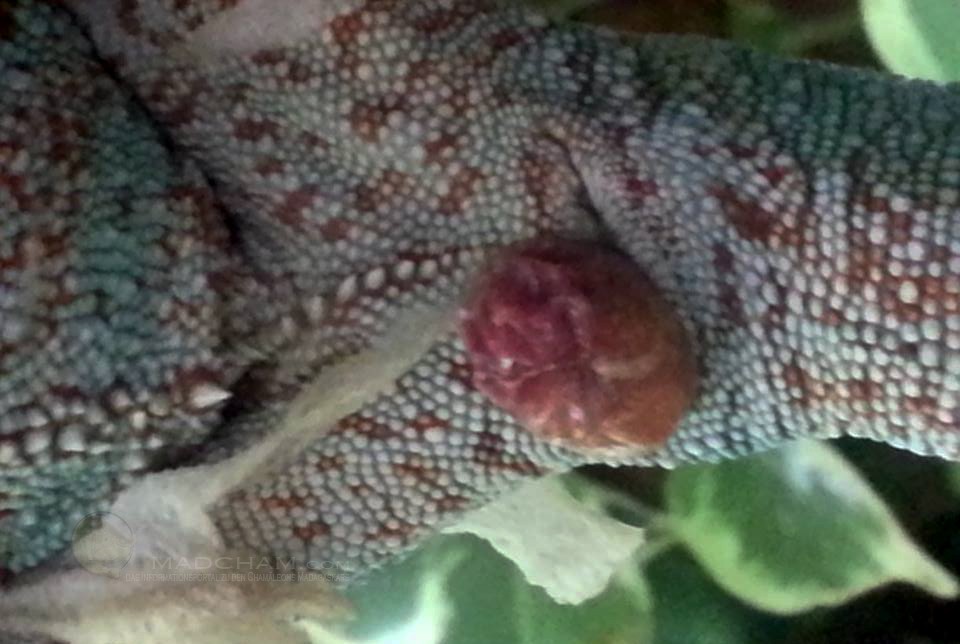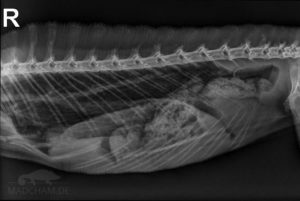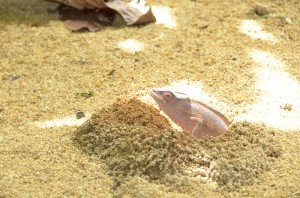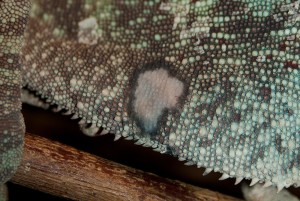Chameleons may sometimes have tissue hanging out the cloaca which they cannot pull back. The medicinal term for this is prolapse. No matter which tissue is affected, a cloacal prolapse is always an urgent emergency that has to see a reptile vet as quickly as possible!
First aid
Until arrival at your reptile vet’s practice, the prolapse needs to be kept humid and clean. You can put your chameleon in its transport box on wet kitchen towels (be careful not to cool its body temperature down). To keep the prolapsed tissue humid, you can use physiological saline solution, in case of emergency even lukewarm water, better a self-made saturated sugar-water-solution. Do never simply “push back” the prolapsed tissue. The tissue is usually “turned inside out” and needs to be put in the anatomical correct position before moving it back into the cloaca.
Which organs may prolapse?
First, the cloaca itself may prolapse. Also, the gut can prolapse, this is the worst case. The more gut hangs out the cloaca, the fewer chances the chameleon has to survive. In females, the oviduct may be pushed out through the cloaca. Males have two hemipenes pockets behind the cloaca. The hemipenes can prolapse via cloaca, one single hemipenis, or both at the same time. Of course, especially in females there also may be several different tissued that prolapse together. It is the task of your reptile vet to find out which tissue has prolapsed.
Causes
An organ prolapse can be caused by different causes that should be clarified thoroughly after treatment to avoid any repetition.
- Egg deposit or birth:
Females that have problems laying eggs or become egg bound, may also get a prolapse. They push so strong to get rid of the eggs that they also push out the cloacal tissue, an oviduct, or even gut tissue. The same may happen during birth with alive young. - Mating:
During mating, the male puts one of his hemipenes into the female’s cloaca. Injuries of the hemipenis may happen when a couple is disturbed or if the female wants to leave the male too early. Even after a successful mating, the male may hurt its everted hemipenis inside the cage. The injured tissue begins to swell and prevents the chameleon from pull the hemipenis back into its pocket. Without females, males eject sperm from time to time, too. - Obstipation:
Too large, partially undigested feeders or simply too much food may be a barrier inside the gut. Regardless the gut tries to carry on these parts of feces. But by continuous pressing, gut tissue might be pushed through the cloaca. - Parasitosis:
Several parasites may cause a prolapse. In many cases, heavy parasite burdens lead to gut inflammation. The inflamed tissue is prone to prolapse, and pain may make the chameleon push additionally. - Lack of calcium:
Calcium is not only necessary for eggs, but also for the gut. A lack of calcium reduces bowel tonus, then the tissue may easier prolapse. In the case of metabolic bone disease, the prolapse may also happen.
Therapy
Your reptile vet will carefully try to subside the swollen tissue. Depending on the condition of the tissue, a manual try to put the tissue back into its place may follow (eventually under full anesthesia). Severe cases often need to be hospitalized. If the vet succeeds in getting all tissue in a physiologic position, but the tissue prolapses again, the vet can stitch a special suture around the cloaca under full anesthesia and inhibit further prolapses.
Some chameleons need surgery due to necrotized tissue. Forecast for successful surgery depends on the kind of prolapsed tissue, its condition, and general condition of the chameleon. For Example, if a big piece of the gut is dead, chances for this animal are poor. In contrast, cloacal, oviduct, or hemipenis prolapses are usually treatable conditions.

